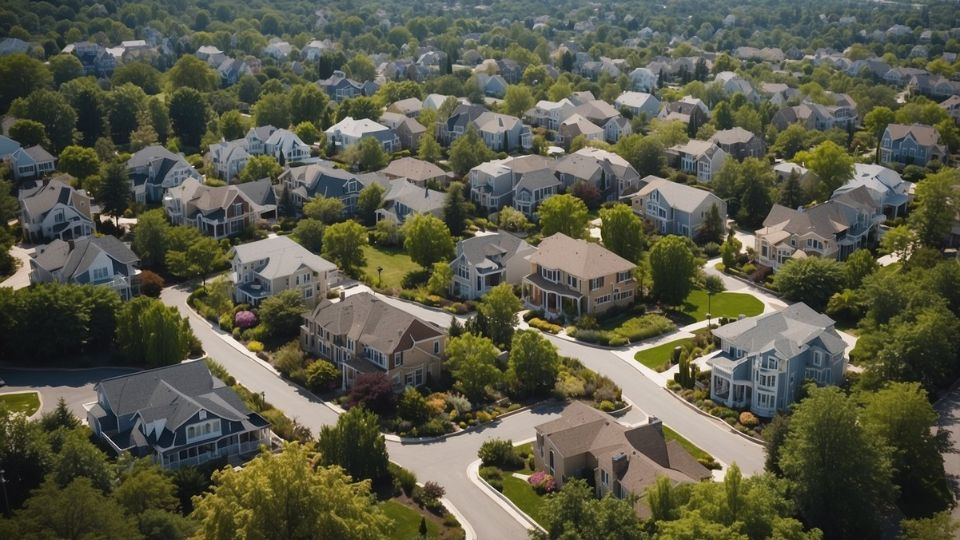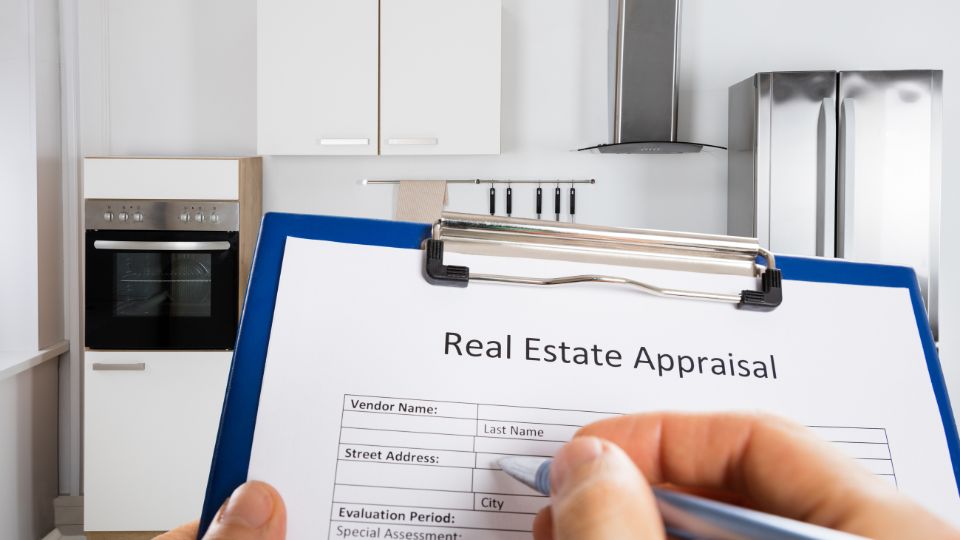Understanding the top 10 types of home loans is crucial for anyone looking to purchase a home, refinance a mortgage, or tap into home equity.
Navigating the world of residential real estate loans can be complex, with a variety of options catering to different financial situations, homebuyer needs, and long-term goals. This comprehensive guide explores the top 10 types of home loan options, helping potential borrowers make informed decisions.
1. Fixed-Rate Mortgages
Fixed-rate mortgages are the cornerstone of home financing, offering stability with the same interest rate—and, consequently, the same monthly payment—over the life of the loan, which typically spans 15 to 30 years. This predictability makes budgeting easier, shielding borrowers from fluctuating interest rates.
The predictability offered by fixed-rate mortgage types of home loans simplifies household budgeting by eliminating the uncertainty associated with fluctuating interest rates that can affect adjustable-rate mortgages. This feature is especially beneficial in an environment where interest rates are volatile or expected to rise, as it locks in the current rate for the life of the loan, potentially saving borrowers thousands of dollars in interest payments over the term of the mortgage.
However, potential borrowers need to consider that the interest rates for fixed-rate mortgages might be higher than the initial rates offered by adjustable-rate mortgages (ARMs). This higher rate is the price of securing long-term stability and should be weighed against the potential risks and benefits of an ARM, especially if the borrower plans to stay in their home for a short period.
2. Adjustable-Rate Mortgages (ARMs)
Adjustable-rate mortgages, commonly known as ARMs, offer a dynamic approach to home financing by starting with a lower interest rate that remains fixed for an initial period. This period can range from one to ten years, depending on the specific terms of the loan. After this initial fixed-rate period, the interest rate adjusts at predetermined intervals—annually, semi-annually, or monthly—reflecting changes in market interest rates. The appeal of ARMs lies in their potentially lower initial rates, which can make homebuying more accessible or allow borrowers to qualify for a larger loan amount than they might with a fixed-rate mortgage.
The adjustment mechanism of ARMs is tied to a financial index, such as the London Interbank Offered Rate (LIBOR) or the Secured Overnight Financing Rate (SOFR), plus a fixed margin that remains constant over the life of the loan. The LIBOR index was replaced by SOFR in June of 2023.
These adjustments are subject to rate caps that limit how much the interest rate can change during each adjustment period and over the life of the loan, offering some protection to borrowers from drastic increases in their monthly payments. Despite these protections, the possibility of rising rates means that borrowers must be financially prepared for potential increases in their future mortgage payments, making budgeting for an ARM more complex than for a fixed-rate mortgage.
ARM types of home loans are particularly suited to certain types of borrowers, such as those who plan to sell or refinance their home before the end of the initial fixed-rate period, or those who anticipate a future increase in their income that could offset higher future payments. Additionally, in a declining interest rate environment, borrowers can benefit from decreasing rates without the need to refinance, as their mortgage rate will adjust downward. However, the uncertainty associated with future rate adjustments requires borrowers to carefully consider their long-term ability to afford potentially higher payments. Understanding the specific terms of an ARM, including the adjustment frequency, rate caps, and the index and margin to which the loan is tied, is crucial for borrowers to accurately assess the risks and benefits of opting for an adjustable-rate mortgage.
3. FHA Loans
FHA loans, insured by the Federal Housing Administration, are crafted to lower the barriers to homeownership for individuals with modest incomes or less-than-perfect credit histories. Unlike conventional loan products that often require higher down payments and stricter credit score criteria, FHA loans offer a more accessible path to purchasing a home with down payments as low as 3.5%. This feature is particularly advantageous for first-time homebuyers or those who have not accumulated significant savings but are capable of managing monthly mortgage payments. By catering to a wider demographic, FHA loans play a pivotal role in promoting homeownership among diverse segments of the population.
Beyond the lower down payment requirement, FHA types of home loans are distinguished by their more lenient credit score requirements. Borrowers with credit scores as low as 580 can qualify for the 3.5% down payment rate, and those with scores between 500 and 579 may still be eligible for an FHA loan with a 10% down payment. This flexibility makes the FHA loan program an attractive option for individuals who have experienced financial difficulties in the past, such as bankruptcy or foreclosure, but have since recovered and are looking to re-establish themselves as homeowners. Additionally, the FHA allows for the use of gifts and grants toward the down payment and closing costs, further easing the financial burden on the borrower.
However, potential borrowers need to understand that FHA loans come with certain stipulations and costs, including the requirement to pay for mortgage insurance. This insurance, which protects the lender in case the borrower defaults on the loan, includes both an upfront premium at closing and an annual premium that is typically divided into monthly installments. While this additional cost can increase the overall expense of the loan, the opportunity to own a home and build equity often outweighs these considerations for many borrowers. Furthermore, FHA loans offer several refinancing options, including a streamlined process for those looking to take advantage of lower interest rates without undergoing a full credit check or appraisal. With their combination of accessibility and support, FHA types of home loans continue to be a crucial tool in making homeownership a reality for individuals and families across the United States.
4. VA Loans
VA loans stand out as one of the most significant benefits offered to veterans, active service members, and select military spouses, thanks to the U.S. Department of Veterans Affairs. Unlike conventional and FHA loans, VA types of home loans distinguish themselves by not requiring any down payment, making homeownership immediately accessible to those who have served the country without the need for substantial savings. This hallmark feature significantly lowers the barrier to entry for home buying, allowing veterans and active military personnel to invest in their futures by owning property.
Moreover, VA loans do not require borrowers to pay private mortgage insurance (PMI), a common requirement for other types of loans when the down payment is less than 20% of the home’s purchase price. This exemption can save borrowers hundreds of dollars in monthly expenses, further enhancing the affordability of purchasing a new home. In addition to these financial benefits, VA loans come with competitive interest rates, often lower than those available through conventional or FHA loans. The VA’s backing of these loans provides lenders with a guarantee, reducing the risk associated with lending and, consequently, allowing for more favorable terms to be extended to the borrower.
Eligibility for VA types of home loans is based on service duration and duty status, with specific criteria outlined by the Department of Veterans Affairs. Once eligibility is confirmed, veterans can enjoy the lifetime benefit of the VA loan program, utilizing it for multiple home purchases or refinances throughout their lives. The VA loan program also includes provisions for funding fees, which can be rolled into the loan amount to reduce upfront costs. However, certain individuals, such as those receiving VA disability compensation, may be exempt from these fees. With their unparalleled benefits and commitment to supporting military families, VA loans provide a powerful tool for financial stability and homeownership, honoring the service and sacrifice of military members and their families.
5. USDA Loans
USDA loans, orchestrated by the U.S. Department of Agriculture, are specifically designed to bolster homeownership in rural and certain suburban communities across the country. These loans are part of a broader effort to strengthen the economic fabric of less densely populated areas by making homeownership more attainable. Remarkably, USDA loans stand out for not requiring any down payment from the borrower, a significant departure from the norms of conventional financing. This feature removes a major financial barrier for many potential homeowners, making it possible for individuals and families to purchase a home without needing to save for years to accumulate a substantial down payment.
Furthermore, USDA types of home loans are known for their favorable interest rates, which are typically lower than those associated with conventional loans. This affordability is enhanced by the USDA’s guarantee, which reduces the risk for lenders and allows them to offer more competitive rates to borrowers. However, to be eligible for these advantageous terms, applicants must meet certain criteria related to their income and the location of the property they wish to purchase. The income limits are set to ensure that USDA loans are accessible to those who truly need them, targeting low-to-moderate-income households. Additionally, the property must be located in an area designated as rural by the USDA, which includes many suburbs and exurbs, expanding the reach of this program beyond strictly agricultural or undeveloped areas.
The application process for a USDA loan involves both income eligibility verification and property eligibility based on its location. Despite these requirements, the USDA loan program remains an incredibly valuable resource for eligible homebuyers, offering them a path to homeownership with minimal financial hurdles. The program also includes provisions for financing property repairs and improvements, making it easier for homeowners to invest in their properties and communities. By offering no down payment requirements and below-market interest rates, USDA types of home loans play a crucial role in promoting homeownership in America’s rural and suburban areas, contributing to the development and stability of these communities.

6. Conventional Mortgages
Conventional mortgages represent the most common type of home loan, setting the standard in the residential lending market. Unlike government-backed options such as FHA, VA, and USDA loans, conventional types of home loans are not insured by the federal government, which shifts a greater degree of risk onto the lender. As a result, these loans typically demand higher credit scores from applicants, often requiring a minimum score in the mid-600s or higher. The necessity for a stronger credit profile ensures that borrowers have a demonstrated history of financial responsibility and stability, making them less risky for lenders. Additionally, conventional loans often require larger down payments compared to their government-insured counterparts, with amounts usually ranging from 5% to 20% of the purchase price. However, borrowers who can afford to put down 20% or more can avoid the added expense of private mortgage insurance (PMI), which can lead to significant savings over the life of the loan.
One of the most appealing aspects of conventional mortgages is their flexibility in terms of loan amounts and property types. These loans are available for a wide array of properties, including single-family homes, multi-unit properties, condominiums, and manufactured homes, providing prospective buyers with a broad spectrum of options to suit their needs and preferences. Furthermore, conventional types of home loans come in various terms, from the traditional 30-year fixed rate to shorter terms like 15 and 10 years, allowing borrowers to choose a payment schedule that aligns with their financial goals and timelines. This flexibility extends to both primary residence purchases and investment properties, making conventional loans a versatile option for a diverse range of borrowers, including first-time homebuyers and seasoned investors.
Despite the stricter credit and down payment requirements, the advantages of conventional mortgages—such as the absence of upfront mortgage insurance premiums required by some government-backed loans—make them a desirable choice for many borrowers. Moreover, for those able to secure a conventional loan, the potential for lower interest rates and the absence of certain fees associated with government-backed loans can make conventional financing a more cost-effective option in the long run. Borrowers with strong credit profiles, stable income, and the ability to make a sizable down payment will find conventional mortgages to be a powerful tool in achieving their homeownership or investment property goals, offering a straightforward path to acquiring property with considerable freedom and flexibility.
Related: Boomer Housing’s Surging Wave: 9 Million Homes Incoming
7. Jumbo Loans
Jumbo types of home loans are specialized financing options designed to accommodate the purchase of high-value properties that surpass the conforming loan limits established by Fannie Mae and Freddie Mac. In most areas of the United States, any mortgage exceeding these set limits—which vary by location and are periodically adjusted—is considered a jumbo loan. This type of financing is particularly relevant in luxury real estate markets or regions with exceptionally high property values, where standard conforming loans are insufficient to cover the cost of a home purchase. Jumbo loans enable borrowers to access the necessary funds to invest in these more expensive properties, thus facilitating homeownership in upscale communities and competitive markets.
Given the higher loan amounts and the increased risk to lenders, jumbo loans come with more stringent qualification criteria compared to conventional mortgages. Applicants typically need to have excellent credit scores, often above 700, to qualify for a jumbo loan. Lenders also require a lower debt-to-income (DTI) ratio, ensuring that borrowers have the financial capacity to manage larger monthly payments. Additionally, down payment requirements for jumbo loans are generally higher, with many lenders asking for at least 20% of the home’s purchase price. This higher equity stake reduces the lender’s risk and helps to ensure that borrowers are financially committed to the property.
Despite their more demanding qualification standards, jumbo types of home loans offer several benefits, including the ability to finance high-value properties without the need for multiple mortgages. Some lenders may also offer competitive interest rates for jumbo loans, especially for borrowers with impeccable credit histories and substantial down payments. However, the market for jumbo loans can be less liquid than for conforming loans, leading to varying interest rates and terms between lenders. Prospective borrowers should shop around and negotiate to secure the best possible terms for their financial situation. Jumbo loans provide an essential mechanism for purchasing luxury homes and properties in high-cost areas, bridging the gap between the housing market’s upper echelons and qualified buyers with the means to access them.
Related: 2024 Foreclosure Trends Increase, But Refinances Gain
8. Interest-Only Mortgages
Interest-only mortgages present a unique financing option that caters to borrowers seeking lower initial monthly payments. By allowing payments that cover only the interest on the loan for a predetermined period, usually ranging from 5 to 10 years, these types of home loans can significantly reduce the financial burden on borrowers during the early years of homeownership. This feature can be particularly attractive to individuals with irregular income streams, such as commission-based workers, freelancers, or those expecting a future increase in earnings. The lower payment structure during the interest-only period provides flexibility and breathing room for financial planning and allocation toward other investments or debts.
However, the structure of interest-only mortgages introduces a shift in payment obligations once the interest-only period concludes. After this initial phase, the loan reamortizes, incorporating both the principal and interest into the monthly payments. This transition can result in a noticeable increase in monthly payments, which may double or even triple, depending on the remaining loan balance and the interest rate. Borrowers must be prepared for this significant change in their financial commitments, necessitating careful planning and budgeting to accommodate the higher payments. This adjustment period is a critical phase where borrowers need to assess their financial stability and readiness to handle the escalated payment structure.
Despite the potential for higher overall costs due to deferred principal payments, interest-only types of home loans offer strategic benefits under certain circumstances. For example, investors or homeowners who plan to sell the property before the end of the interest-only period can leverage the lower payments to maximize cash flow or invest in home improvements that could increase the property’s value. Additionally, those confident in their ability to refinance to a more traditional mortgage structure before the interest-only period ends might find this option appealing. However, potential borrowers need to consider the long-term implications and ensure they have a robust financial plan to manage the transition from interest-only to full principal and interest payments, avoiding any financial strain this adjustment might cause.

9. Home Equity Loans
Home equity loans, often referred to as second mortgages, serve as a powerful financial tool for homeowners looking to leverage the equity they have accumulated in their property. Equity, the difference between the current market value of a home and the outstanding mortgage balance, can be tapped into through these loans, providing homeowners with a lump sum of cash. This sum is disbursed at a fixed interest rate, which offers predictability and stability in repayment terms. Equity types of home loans are particularly appealing for covering significant one-time expenses, such as undertaking major home renovations, paying for educational costs, or consolidating existing high-interest debts into a single, lower-interest payment, thereby streamlining finances and potentially saving on interest costs over time.
The structure of a home equity loan offers several advantages, including the potential for tax-deductible interest if the loan is used for qualifying home improvement projects. This can provide an additional financial incentive for homeowners considering renovations that could enhance their property’s value. Moreover, because these types of home loans are secured by the home itself, lenders are typically able to offer lower interest rates compared to unsecured forms of borrowing, such as credit cards or personal loans. The fixed rate and term of a home equity loan also simplify budgeting, as borrowers have a clear, consistent payment schedule from the outset, eliminating any surprises related to fluctuating interest rates or variable monthly payments.
However, the decision to take out equity types of home loans should not be made lightly. Since the loan is secured by the homeowner’s property, defaulting on the loan could result in foreclosure. Therefore, it’s crucial for borrowers to carefully assess their financial stability and ability to repay the loan over its term. Prospective borrowers should consider their long-term financial plans, including any potential changes in income or expenses, before committing to a home equity loan. Additionally, it’s wise to compare offers from multiple lenders to ensure the best possible terms, including the lowest interest rate and fees. By thoroughly evaluating their needs and financial situation, homeowners can make an informed decision on whether a home equity loan is the right choice for their financial goals, ensuring they leverage their home’s equity most advantageously.
10. Home Equity Lines of Credit (HELOCs)
Home Equity Lines of Credit, or HELOCs, offer homeowners a versatile and flexible means of accessing the equity built up in their homes. Unlike a traditional home equity loan, which provides a lump sum upfront, a HELOC operates more like a credit card, giving borrowers the ability to draw on a pre-approved amount of money over a set period known as the draw period. This period usually lasts for 10 years, during which the borrower can access funds up to the credit limit, repay them, and then borrow again. The interest rates for HELOCs are typically lower than those for credit cards or unsecured personal loans, making them an attractive option for financing large projects or expenses over time, such as ongoing home renovations, educational costs, or even to cover emergency financial needs.
However, the flexibility of HELOC types of home loans comes with the caveat of variable interest rates, which are tied to prevailing market rates. This means that the interest rate on a HELOC can fluctuate over time, affecting the monthly payments and overall cost of borrowing. While some HELOC types of home loans offer rate caps to limit the extent of interest rate increases, borrowers must be prepared for the possibility of rising payments, especially in an environment of increasing interest rates. Homeowners must consider this variability and plan accordingly, ensuring they can manage potential increases in their monthly payments. Borrowers should also be mindful of the repayment phase that follows the draw period, during which they must pay back the principal amount borrowed along with interest, which could significantly increase monthly financial obligations.
Opting for a HELOC requires careful financial planning and consideration of one’s long-term financial stability. Homeowners should assess their ability to manage the potential for variable monthly payments and ensure they have a strategy for repaying the borrowed funds. It’s also wise to shop around and compare different HELOC offers, paying close attention to the terms, interest rates, and fees associated with each. Additionally, using a HELOC for investments that could increase the value of the home or significantly improve one’s financial position can be a strategic move. However, using borrowed funds for frivolous expenses can lead to financial strain. Ultimately, HELOC types of home loans can be a powerful financial tool when used responsibly, offering homeowners a flexible way to finance their needs and goals while leveraging the equity in their homes.





